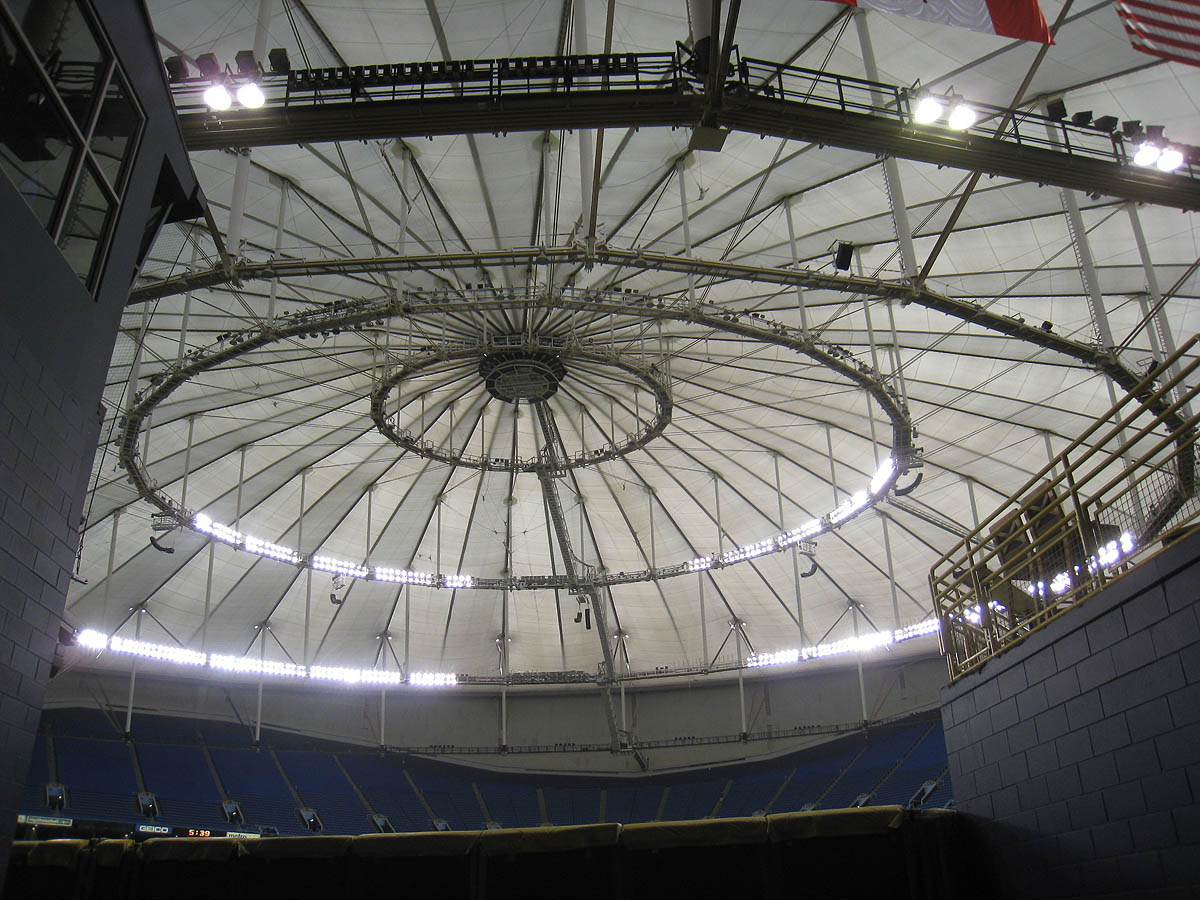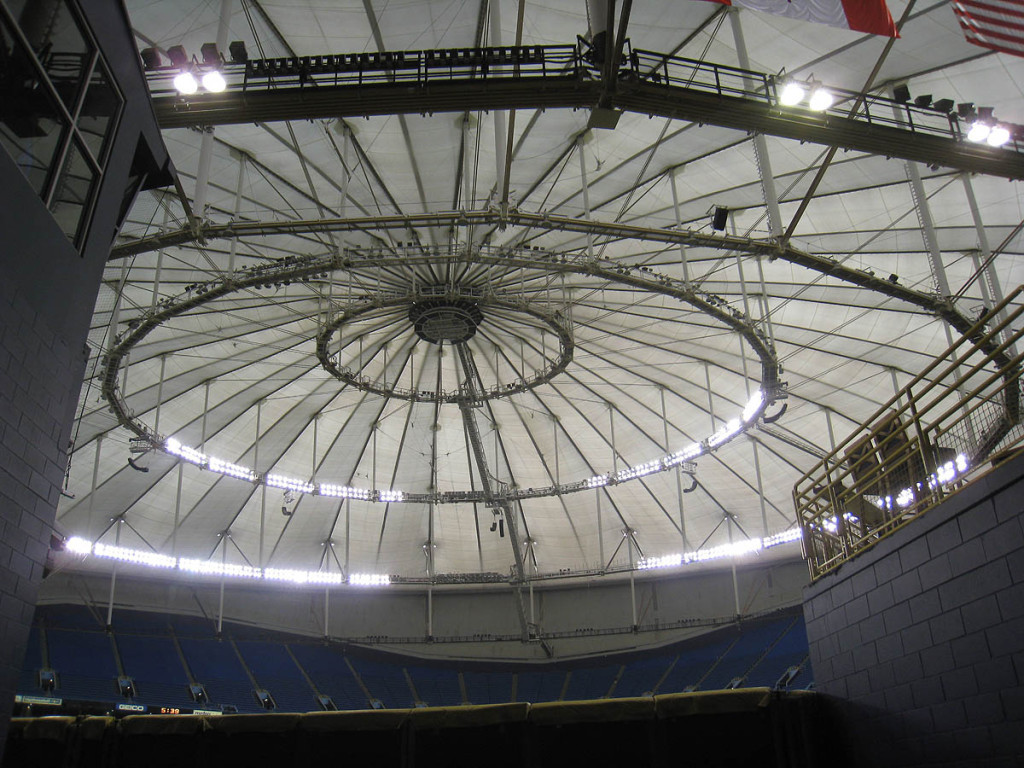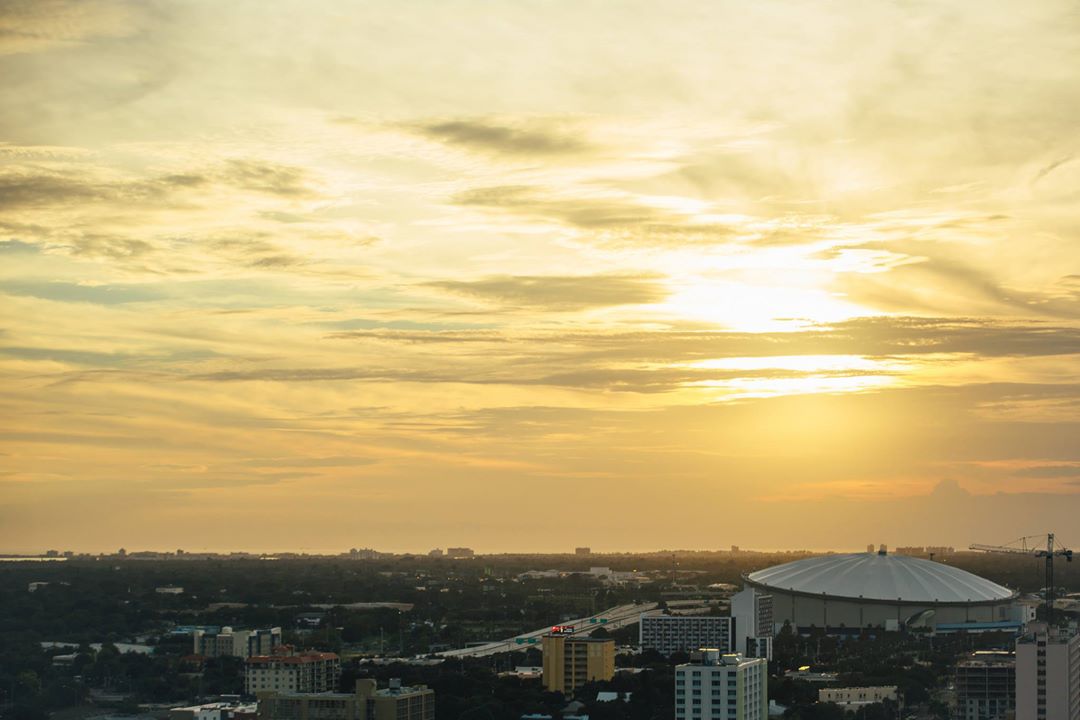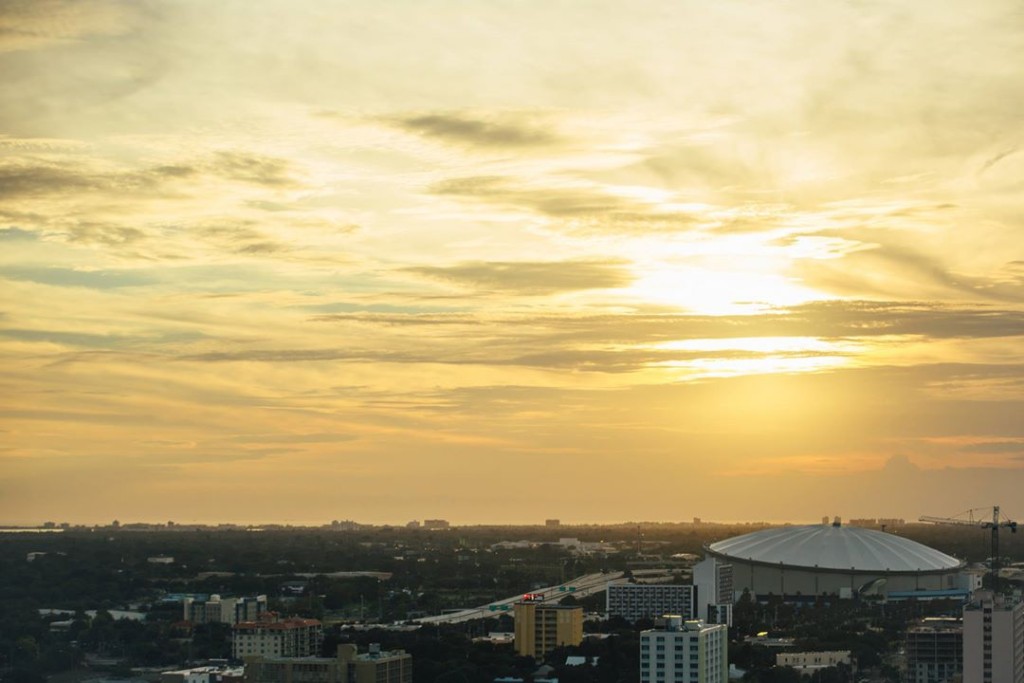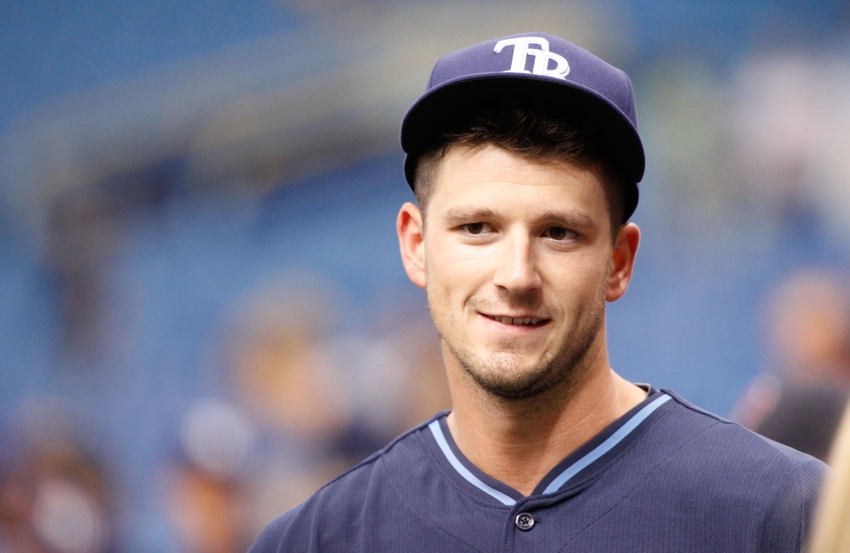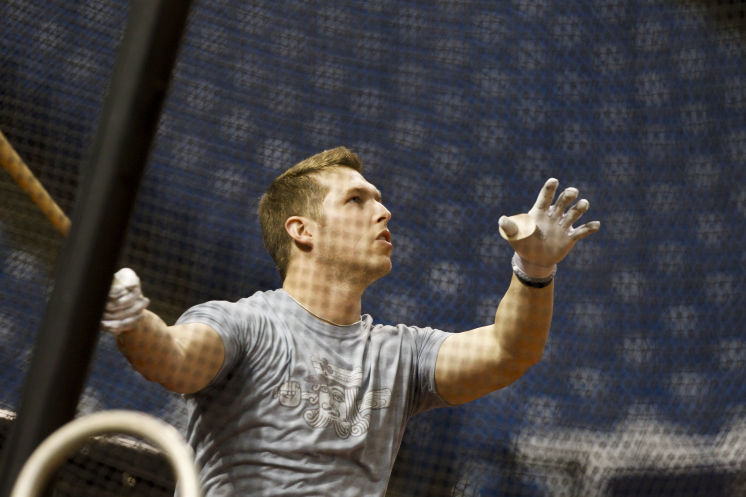
Even though pitchers and catchers are not scheduled to report to camp for another eight days, 10 players took part in optional workouts at Tropicana Field on Wednesday. Also, at long last, Dan Syzmborski (Baseball Think Factory and FanGraphs) released his 2016 ZiPS projections for the Tampa Bay Rays. Let’s delve into both subjects.
On Corey Dickerson, and the optional workouts at Tropicana Field
Newest acquisition OF Corey Dickerson joined fellow newcomer Steve Pearce, Rene Rivera, Tim Beckham and Brandon Guyer for the optional workout. Pitchers Chris Archer, Jake Odorizzi Matt Moore, non-roster invite Mark Sappington, and Chase Whitley ― who is rehabbing from Tommy John surgery ― were also at the Trop, joining several other players who were invited to MLB camp.
Dickerson, who is expected to add some thump to the Rays lineup, called the pre-Spring Training workouts important:
The addition of Dickerson (along with Pearce, Brad Miller, and Logan Morrison) to the returning core of the lineup lengthens and balances things for Manager Kevin Cash:
The biggest thing is it lengthens us out a little bit, Cash said. There were plenty of times last year where we fell short. That’s not discrediting any of our players that we had out there, but we have some established hitters now that are going to lengthen and balance out our lineup.
He and the other offseason additions will also give Cash a better arrangement from which to choose when playing match-ups. As Marc Topkin (Tampa Bay Times) points out, the addition of Dickerson further emphasizes the need to move James Loney, which would free first base for Pearce and Morrison, and create more DH at-bats for Dickerson.
Dan Syzmborski’s 2016 ZiPS projections for Tampa Bay
Let’s first start with a disclaimer from FanGraphs, where the Rays 2016 ZiPS projections can be seen in full:
ZiPS projections are computer-based projections of performance. Performances have not been allocated to predicted playing time in the majors — many of the players listed above are unlikely to play in the majors at all in 2016. ZiPS is projecting equivalent production — a .240 ZiPS projection may end up being .280 in AAA or .300 in AA, for example. Whether or not a player will play is one of many non-statistical factors one has to take into account when predicting the future.
For the moment, we’ll be looking at the overall projections, and later we’ll look more deeply into things.
It too would be a good idea to first define the statistics mentioned in the chart (below).
- BA (Batting Average): Rate of hits per at bat, calculated as H/AB.
- OBP (On Base Percentage): Rate at which the batter reaches base, calculated as (H+BB+HBP)/(AB+BB+HBP+SF).
- SLG (Slugging Percentage): Average number of total bases per at bat, calculated as Total Bases/AB.
- OPS (On Base Plus Slugging): Combination of OBP and SLG, calculated as OBP+SLG.
- wOBA (Weighted On Base Average): Combines all the different aspects of hitting into one metric, weighting each of them in proportion to their actual run value. While batting average, on-base percentage, and slugging percentage fall short in accuracy and scope, wOBA measures and captures offensive value more accurately and comprehensively.
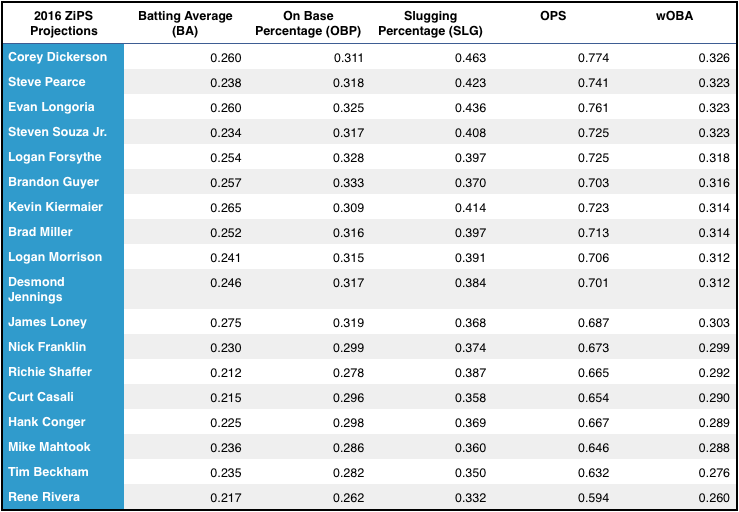
A few bulleted takeaways follow.
- ZiPS paints Dickerson as the best hitter on the roster when speaking about weighted on base average (.326). While he posted a great .377 wOBA at Coors Field (an extreme hitters ballpark) Dickerson’s weighted on base average is projected to fall into average/above average territory at Tropicana Field (an extreme pitchers ballpark).
- Sticking with wOBA, Dickerson is followed by a trifecta of hitters who are each projected to post a .323 weighted on base average: Longoria, Souza Jr., and Pearce.
- On the subject of Longo, the Rays slugging third baseman seems primed for a similar season to that of 2015. It will be interesting to seen if he can exceed the ZiPS projections with the new and improved lineup, which will ideally offer him more protection.
- Ian Malinowski (DRaysBay) brought up an interesting point in his dissection of the peripheral projections:
There are a few other big swings in projections between the two systems, and two of them also come in the Rays outfield. ZiPS rates both Kevin Kiermaier and Desmond Jennings significantly higher than Steamer overall, and it’s a difference that matters. In the world of ZiPS, both of those guys are clear everyday players. For Steamer, they look more like guys you want to platoon. Which system is more right about Kiermaier will have a lot of bearing on the Rays’ fortunes over the next several years, and which system other teams believe is right about Jennings will have to do with what they’re currently offering the Rays for him in trades.
- Logan Forsythe appears to be due for a regression from his .281 BA/.359 OBP/.444 SLG/.803 OPS/.350 wOBA 2015 team MVP season.
Noteworthiness
― According to Jeff Todd (MLB Trade Rumors), the Rays are in pursuit of a replacement for Jake McGee. Todd writes:
The Rays are in “advanced talks” with free agent righty Tommy Hunter, Marc Topkin of the Tampa Bay Times reports. But Topkin cautions that Hunter is still also holding chats with other teams, possibly in search of a multi-year guarantee, suggesting that a signing with Tampa Bay is not imminent. And ESPN.com’s Jerry Crasnick notes that Hunter is still rehabbing after needing core muscle surgery this winter (Twitterlinks). The club is working on other possibilities as it looks to beef up a pen that has lost some options to trade. Ryan Webb is also under consideration, per the report, and the Rays have looked elsewhere as well — both on the free agent and trade markets.
― Mat Germain (DRaysBay) wrote about the potential replacements for McGee on the free-agent market, including Hunter.
― Danny Russell (DRaysBay) defended a claim that the Rays should pursue Tommy Hunter.

